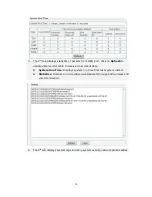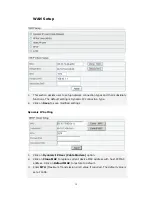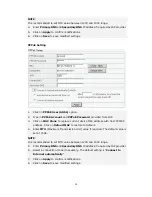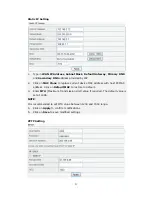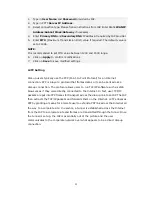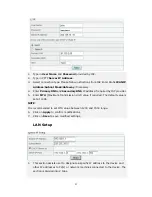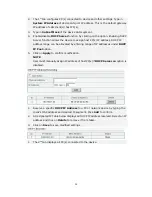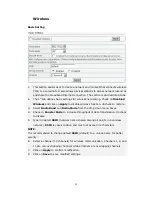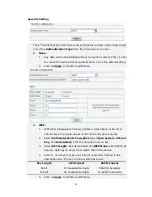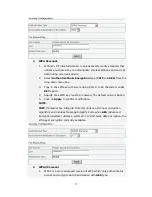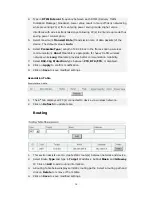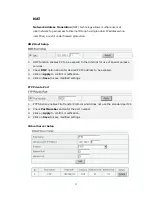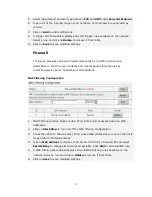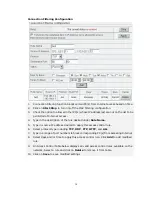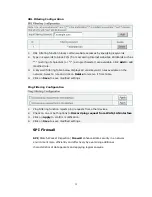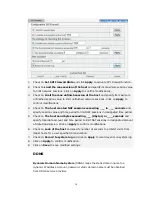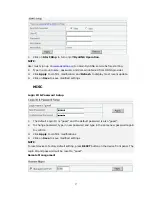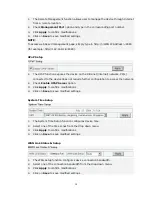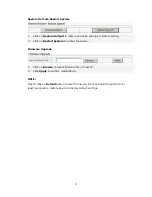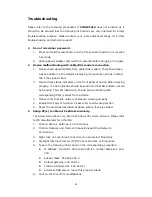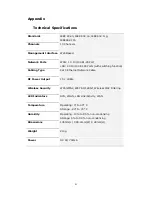
32
1.
Virtual server allows PC(s) located outside of network to be able to access services on
PC(s) connected to the device.
2.
Type in the description of the rule desired under Rule Name.
3.
Type in internal IP address of the client PC(s) desired for public port number packet
access.
4.
Select the Protocol type including TCP, UDP, FTP, HTTP, HTTPS, POP3, SMTP, DNS,
TELNET, IPSEC, and PPTP.
5.
Enter External Port number that the public port number will be changed to when the
packet enters the network.
6.
Enter Internal Port number from the Internet that will be redirected to the private IP
address in the network.
7.
Click on Add to add modified rule.
8.
A Virtual Server Table below displays all valid virtual servers available on the network.
Select a rule and click on Delete to remove it from table.
9.
Click on Save to save modified settings.
Port Triggering
1.
Port Triggering function commands router to remember outgoing data for specific port
numbers, recalls the matching requested data, and pulls the data back to the proper
PC(s) by its IP address and port mapping rules.
2.
Select one of the predefined rules or type in the description of the service desired
under Rule Name.
3.
Select outbound port protocol type between TCP and UDP under Trigger Protocol.
4.
Type in all of the outbound range of port numbers. Port numbers are separated by
comma. Use a dash in between port numbers to define a range of port numbers.

